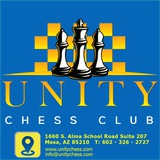On 24.Qd2, there would follow 24...Bxd4 25.Kh1 Rxa4 – White is not mated, but Black completely dominates, as well as winning material.
The white pieces cannot come to the aid of their king, as they are too far away. The extra rook does not help, either.
Unity Chess Club
Alexei Shirov 2500 Daniel King 2515 Gausdal 1990 White to move
It is obvious that White’s chances are tied up with play on the light squares. The e5-square is covered by two black pawns, but not actually blockaded! Consequently, White clears the diagonal, and brings his queen into the attack with decisive effect:
The counterattack on the h-file does not work: 32...Rxh2+ 33.Kxh2 Rh8+ 34.Bh3!.
33.Nf5!+ gxf5 34.Rg3+ Kf8 35.Qxf5 Qf4 36.Qg6 Ra7 37.Rh3 Rxh3 38.Qg8+ Ke7 39.d6+
Black resigned, because after 39...Bxd6 40.Qf7+ Kd8 41.Rxd6+ he is mated.
Unity Chess Club
Vladislav Nevednichy 2470 Konstantin Sakaev 2555 Moscow ol 1994 Black to move
White’s entire strategy revolves around using the d5-square as an outpost for his pieces. For the sake of this, he has gone in for a positional queen sacrifice. Undoubtedly, if White manages to castle queenside, exchange a pair of knights and entrench his bishop on d5, his pawn structure will be ideal. The e4-pawn and Bd5 will defend each other, and the d3- square will be used as a transfer point to bring a rook to the queenside, to attack the black pawns there.
Therefore, Black plays a counter-sacrifice, to sow disharmony in the white position:
Therefore, Black plays a counter-sacrifice, to sow disharmony in the white position:
This does not help, but after other continuations too, Black puts a rook on d8 and takes the d-pawn.
22...hxg5 23.Bxg5 Rd8 24.Kb1 Rxd6 25.Rxd6 Qxe1+ 26.Kb2 Qb4 27.Rd8+ Kh7 28.c3 Qe7
